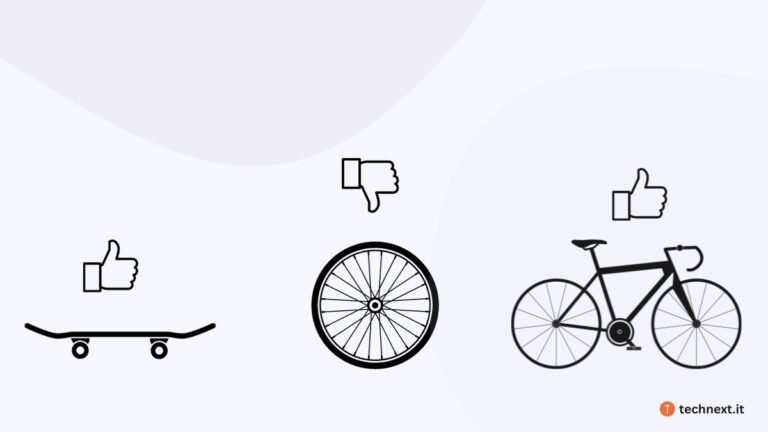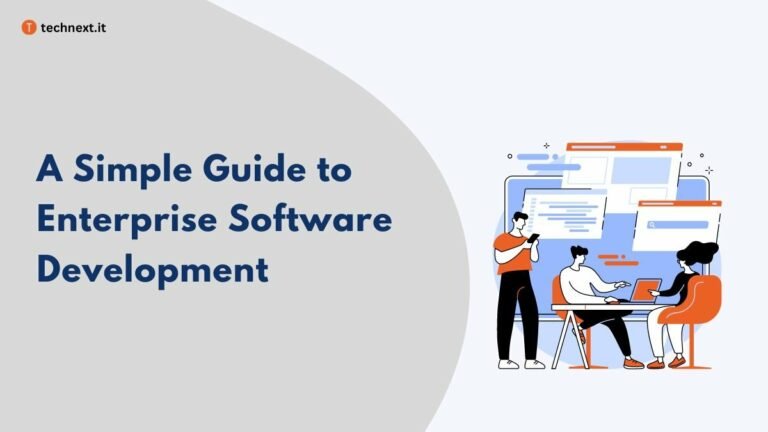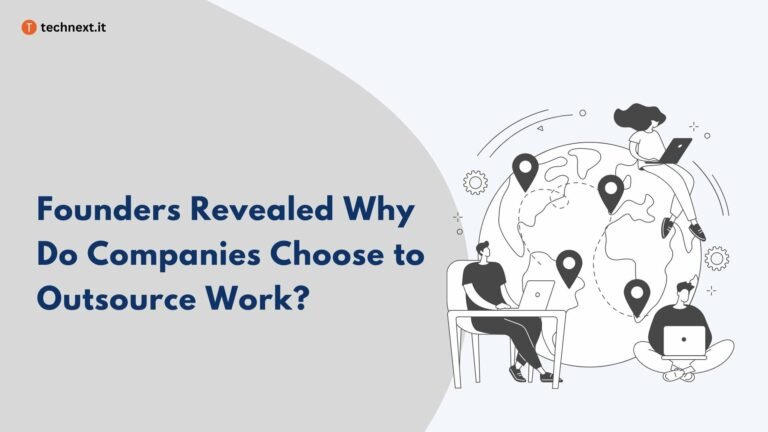Founder’s Guide to Outsourcing Software Development in 2023
Outsourcing software development has become the new normal in the industry. But is it good for your business? If so, how can you outsource software development and maximize the result? Let’s discuss!

In today’s fast-paced and ever-evolving business landscape, outsourcing has become a popular option for both new and established businesses. Outsourcing software development, in particular, has gained significant traction in recent years, especially during and after the Covid 19 pandemic.
While the in-house software development model still remains the go-to solution for most businesses, many founders outsource their software development efforts to their offshore development partners, mainly to reduce cost and accelerate speed. Experts believe this trend will only go up in the upcoming years. According to Deloitte, In 2020, 70% of companies will have enlisted an outsourcing partner to cut expenses.
Although there are thousands of companies and many outsourcing models available, It can be challenging to navigate the software development outsourcing landscape and find the right development partner.
In this article, we will discuss everything you need to know about software project outsourcing as a founder, including its pros and cons, steps to outsource software development, and valuable advice from business leaders who have already tried outsourcing their development efforts.
Summary
- Outsourcing software development, especially to an offshore development partner, has become insanely popular in the last few years and is still rising.
- This business practice comes with many advantages but not without some key disadvantages. Yet, companies are doing it mainly because it saves time, money, and energy.
- Finding the right development partner is challenging, but by following some systematic approaches and steps, you can find a trustworthy partner.
- A few things are required to make a collaboration successful—especially good communication.
- Last but not least, both parties need to work toward the common goal of building a great tech product and building a lasting relationship.
What is Software Development Outsourcing?
Simply put, software development outsourcing is a business practice where businesses contract with an external vendor to handle some or all of their software development needs. This allows businesses to access specialized expertise all over the world while reducing costs and accelerating development speed.
Outsourcing software development can include tasks such as coding, testing, design, project management, and even technical support. You can choose to work with outsourcing partners within your own country(onshore), in neighboring countries(nearshore), or in distant locations(offshore), depending on your specific needs and business goals.
In most cases, companies outsource software development to offshore development companies; we will discuss more on this topic.
Pros And Cons Of Outsourcing Software Development To Offshore Development Partners
Software development outsourcing comes with its own advantages and shortcomings. For some businesses, the pros may outweigh the cons; for some, it’s the opposite. Well, we will discuss both pros and cons of outsourcing software engineering in a generalized manner so that you get a proper idea.
Pros Of Software Development Outsourcing
- Cost Savings: Outsourcing saves your startup resource on staff costs like benefits, insurance, and training. Also, premises cost like rent and bills, etc. In the case of offshore outsourcing, developers’ salary is a big factor that reduces overall cost.
- Access to Talent: Outsourcing can provide you access to a worldwide talent pool to find the best software developers for your startup.
- Scalability: Outsourcing enables companies to quickly scale their development team as needed without hiring additional full-time staff.
- Improved focus: Outsourcing non-core assignments frees up your in-house resources to focus on core business activities.
- Time to market: By optimizing development and cutting non-essential work, you may launch your product faster. This improves time to market, letting you get your product to clients quicker and easier.
- Flexibility: Outsourcing development provides businesses with flexibilities they may not get in-house environment. They don’t have to deal with employment laws, working hours, vacations, and many more.
- Quality Improvement: Outsourced teams can bring in fresh perspectives and new ideas to improve the quality of the final product. Plus, if you tie up with the right development partner, their industry experience will aid you in creating a better product.
- 24/7 Development Availability: Depending on your development partner, service can be available 24 hours a day, seven days a week, allowing for continuous development and maintenance of a product or application. Although, this is not recommended if you want a better quality product.
- Risk Mitigation: By outsourcing product development, you can identify, analyze, and reduce or control risks to an acceptable level for your projects.
- Increased Resource Availability: Outsourcing software development allows increased resource availability that can result in improved productivity and the capacity to take on more complex and large projects.

Cons Of Software Development Outsourcing
- Communication problems: Miscommunication between in-house and outsourced teams can lead to delays and misinterpreting requirements for your project.
- Finding the best outsourcing firm is challenging: Nowadays, software development outsourcing companies are everywhere. Choosing the wrong agency can cost you a fortune.
- Lack of control over the project – Outsourcing can lead to a lack of control over project development and progress, as the external company may have its own processes and timelines.
- Time zone differences – Different time zones can result in difficulties coordinating and communicating effectively within your teams.
- Quality control issues – Ensuring the quality of the final product may be challenging, as it can be difficult for you to monitor and oversee the work of external teams.
- Cultural differences – Different cultures can result in misunderstandings and miscommunication, affecting your project’s success.
- Potential security concerns – Outsourced software development may involve sensitive information about your startup that can raise potential security concerns.
- Dependence on an external company – Relying on an external company for software development can lead your startup to dependence on outsiders, which can cause a lack of internal expertise.
- Higher costs in certain cases – Outsourcing can lead to higher costs, particularly if there are unexpected expenses or problems with your project.
We have been discussing the fundamentals of Software Development Outsourcing up to this point. Now, let’s get into the topics that you should be familiar with even before you consider outsourcing software development. These topics cover both software development & outsourcing software development.
Things You Should Know Before Outsourcing Software Development
You can be a technical or non-technical founder, although most founders are technical. Then they won’t have to be concerned. But if you don’t know, or if you do know but want to review, there are some things you should know before you start outsourcing Software Development. It is unlikely that you will always find a suitable outsourcing partner, but if you have a basic understanding of the following issues, you will be able to spot the flaws of your outsourcing partners.
Software Development Life Cycle
The 1st topic is Software Development Life Cycle (SDLC). SDLC is a systematic approach to creating high-quality, cost-effective software in as little time as possible. As a founder, it’s important for you to understand the software development life cycle (SDLC) to ensure that your outsourcing partner is following each step properly.
The purpose of the SDLC is to deliver top-quality software that meets and exceeds user requirements. You’ll be involved in requirements gathering and analysis to gain a thorough understanding of the software’s needs and goals. Then, the team will create a blueprint of the software and implement the code.
After that, you’ll verify that the software meets specifications through testing and bug fixing. Finally, the software will be made available for use, and it’s crucial that you provide ongoing support and make updates as necessary. Here are the steps of SDLC for your better understanding.
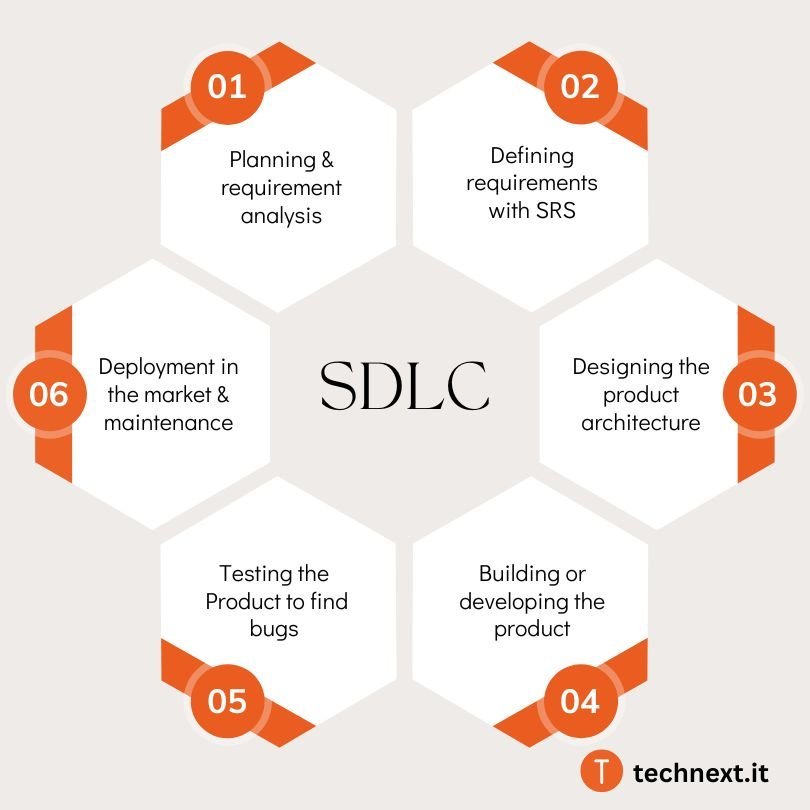
To learn better about SDLC, you can read the following article.
The SDLC is the overall process for creating software, while the Software Development Methodologies provide a specific approach for carrying out the SDLC. It’s also essential for you to have an understanding of the various software development methodologies.
Software Development Methodologies
To execute the development project well, you need a structructured process of working on a project, which is known as software development methodologies in the tech world. There are several different software development methodologies, including Waterfall, Agile (Scrum, Kanban), Lean, DevOps, Extreme Programming (XP), Spiral, Feature-Driven Development (FDD), and more.
However, it’s important for you to pay attention to whether or not your development partner mentions the methodology they will be using. This is because, even though the partnership may be temporary, the software will be permanent, and it’s vital that the methodology is well documented and understood by you and your team for future scaling purposes. To learn better about SDLC, Read this article.
Project Scope And Goals
If you want to increase the possibility of delivering a successful project, you have to choose a methodology that supports the scope and goals of the project. As a founder, having a clear understanding of the project scope and goals before outsourcing software development is crucial.
A Project Scope and Goals can help you make informed decisions and ensure that your vision for the project is clearly communicated to the outsourcing development team so that everyone is on the same page. Additionally, it will help you to avoid scope creep, which can lead to unexpected changes in the project, delays, and increased costs in the future while outsourcing. To know more, read this article.
You need to align the project scope and goals with the technical requirements to define what the software should be able to do. And that’s why you need a clear vision of technical requirements.
Technical Requirements
Having a clear vision will help you to ensure that the outsource development team has a clear understanding of the technical aspects of the project, including the technology stack, security requirements, performance expectations, and any constraints or limitations. You can start by assessing the business requirements and goals of the project. Then, evaluate the current technology landscape and available tools and technology. It’s important for you to involve the development team and other stakeholders to determine the best technology stack for your project.
Ensure that you outline performance expectations, security requirements, and any limitations or constraints. Proper documentation of the technical requirements in a clear and easily understandable manner is also essential for the success of your project. To understand technical requirements better, please read this article.
Technical requirements influence the scale and complexity of the software development project, which determines the best-outsourced engagement option to ensure that the software development project is completed within budget and on time. To ensure a successful project, you should familiarize yourself with the different software development outsourcing engagement models.
Software Development Outsourcing Engagement Models
Software development outsourcing engagement models include Fixed Price, Time & Materials, Dedicated Team, Outcome-Based Models, Offshore Development Center (ODC), etc. Each model has its own unique pros and cons, and it’s important to choose the right model that fits your project requirements and goals. Understanding the engagement model will help you to define the scope of work, allocate resources and budgets, and manage the project expectations. For more, read this article.
Legal and Contractual Considerations
Another topic that binds all together is Legal and Contractual Considerations. Before outsourcing software development, it is important for you to consider the legal and contractual implications of the project.
Legal and Contractual Considerations include understanding intellectual property rights, data privacy laws, confidentiality agreements, and other legal requirements that may apply.
It is crucial for you to define the terms of the agreement, each party’s responsibilities, and the contract’s dispute resolution process. Because later this knowledge will help to ensure that you and your outsource development partner have a clear understanding of your rights, obligations, and expectations and minimize the risk of disputes or misunderstandings.
You can also seek the help of legal counsel to take the review. To better understand this topic, you may read this article.

Performance Evaluation
As a founder, it’s important for you to have a clear understanding of the performance evaluation process for your software development outsourcing partner. So that you can set specific performance goals and metrics, determine how progress will be tracked and measured, and regularly review the performance of the development team.
You need to make the performance evaluation process clear and well-defined and involve regular feedback and communication between you and the development team.
In addition to these, you need to understand project management, or you can also hire a CTO, or if you are lucky enough to find a trusted outsource development partner, you can consult them. With your foundational understanding in place of Outsource Software Development, you can move on to understanding the process.
How To Outsource Software Development
As I mentioned earlier, selecting the right offshore development company and starting a fruitful partnership is challenging, especially if it’s your first time doing it. But taking a few correct steps in the right direction minimizes risk. Here are the steps you need to take to start a fruitful partnership regarding outsourcing software development.

Step 1: Define Project Scope And Goals
As I previously stated, having a clear understanding of the project scope and goals is very important for you as a founder. Your company’s Project scope and goals should match your outsource software development partner. To define your project scope and goal, understand your business needs, requirements, and constraints.
Next, you must clearly outline the project’s scope, including the features and functions that need to be developed and any limitations or exclusions. You should also determine the timeline, budget, and resources required to complete the project. Draft your project scope statement to take approval from key stakeholders; if necessary, rethink and rearrange. And finally, establish specific, measurable, and achievable goals that align with your business objectives and help to track progress and measure success.
Step 2: Decide On Software Development Methodologies And Engagement Model
When it comes to software development, it’s necessary for you to decide on the right methodology and engagement model for your project. To make the best choice, you need to consider various factors such as project requirements, customer/stakeholder preferences, team skills and experience, project timeline, budget, and industry standards and best practices. Based on these considerations, you can choose a methodology that is most suitable for your project, such as an Agile, Waterfall, or hybrid approach.
Outsource partners often choose Agile (Scrum, Kanban), which is popular and effective. As for the engagement model, you can opt for an off-shore/near-shore hybrid combination. As soon as your project’s scope, objectives, methodology, and engagement model are decided. It’s time to start looking for possible outsourcing partners.
Step 3: Research And Evaluate Potential Partners
You should start the research from the market to identify potential partners that meet your criteria and gather information about their reputation, experience, and expertise. It is mandatory to verify references and credentials and evaluate their portfolio of work to see if they have experience in similar projects and if their work meets your standards.
Assessing the potential partner’s culture and values is also crucial to ensure a good fit and alignment with your startup. Once you have thoroughly evaluated and shortlisted the potential partners, it’s time for the next step – RFP.
Step 4: Request For Proposal (Rfp)
Requesting a proposal from outsourcing development candidates is another essential step in the selection process. To ensure that you receive comprehensive and accurate proposals, it is important to define your project requirements and provide background information about your organization and the project.
Outline your expectations for the project, including timelines, budgets, and desired outcomes, and ask the outsourcing candidate to provide information on their qualifications, including their experience, expertise, and portfolio. Request a detailed proposal that includes their approach to the project, methodologies, and estimated costs and timeline.
Specify the format for the proposal and the deadline for its submission, and request references from previous clients to validate their experience and expertise. After sending the request for proposal, you must wait until the deadline has passed before proceeding.
Step 5: Review Proposals And Select A Partner
Now it’s time to review the proposals from potential outsourcing partners. To review proposals from candidates and select a partner, you can start by evaluating their proposals which include the technical competence of each candidate, including their skills, experience, and qualifications.
You need to assess their approach and methodology to ensure it aligns with your needs. Compare the estimated costs and timelines of each candidate to determine which one offers the best value and meets your budget constraints. Check their communication and collaboration skills to ensure they can work effectively with your team and stakeholders.
Verify their references and portfolio to ensure they have a track record of delivering successful projects. Make sure you have your experts by your side throughout the reviewing and selecting session.
Step 6: Negotiate And Sign The Contract
You and your team can start by reviewing the contract offered by the partner to ensure that the terms and conditions align with your expectations. Identify any areas of concern or conflicts and discuss them with the partner to find a mutually beneficial solution.
Consider items such as payment terms, Intellectual Property (IP) rights, confidentiality, and termination clauses. Make sure that the contract is clearly written and specifies the responsibilities and expectations of each party.
You can seek legal advice if necessary to ensure that the contract is legally binding and protects your interests. After negotiating, sign a contract and start a productive partnership.
What Founders Should Do to Ensure Successful Collaboration
Signing the contract is the stepstone of a new journey, which comes with its own set of challenges. Now to make this partnership fruitful, a founder needs to take some necessary steps.
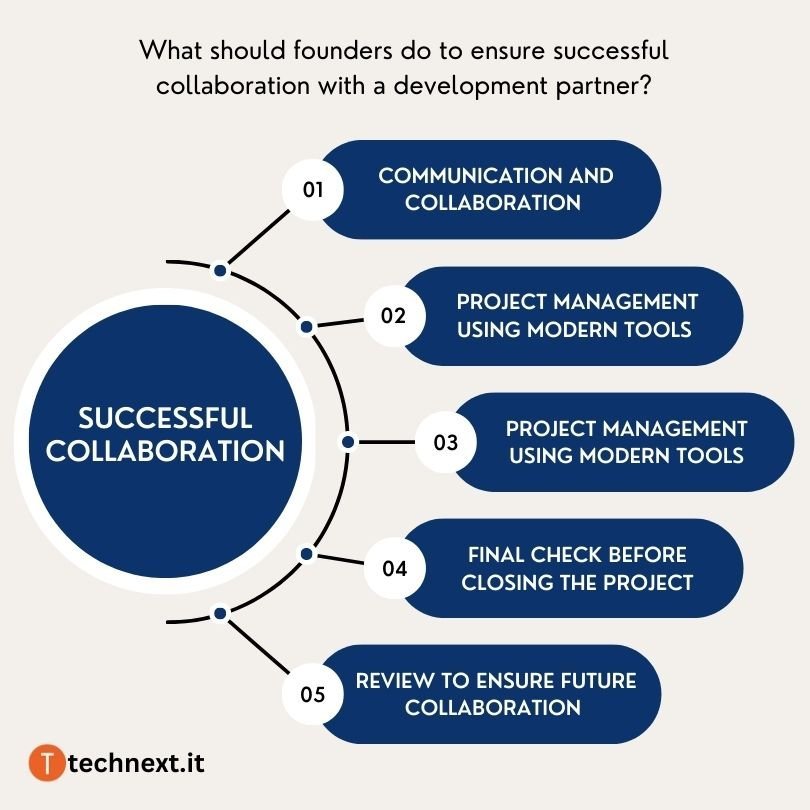
Set Up Communication And Collaboration Tools
For a successful collaboration with your outsourcing partner, it’s essential to have clear and effective communication and collaboration tools in place. These tools can make the collaboration process smoother by ensuring that everyone involved in the project is informed and on the same page. Popular tools for this purpose include email and video conferencing platforms like Zoom or Skype. You can improve communication, transparency, and collaboration by choosing the correct technologies for your team.
Choose A Project Management Tool
As a founder, choosing the right project management tool is key to successful outsourcing. This tool will help you track tasks, deadlines, progress, and teamwork, making it easier to monitor the project’s success. There are several options to choose from, such as Asana, Trello, and Jira. When selecting a project management tool, consider your team size, project complexity, and the level of customization you require. The correct project management tool lets you track progress, give comments, and keep everyone in sync.
Actively Monitor Development Progress & Provide Feedback
Monitoring and giving feedback on your outsourced development project is essential. You can maximize your outsourcing investment and receive the best project results by monitoring progress and providing feedback.
Keeping track of the tasks, progress, and milestones helps ensure that the final outcome meets your expectations and requirements. Providing timely and constructive feedback helps improve the overall quality of the project and can lead to better results. Well-structured and feedback-based communication with your outsourcing partner is key to ensuring that the project is on track and moving in the right direction.
Finalize And Close The Project
Finalizing and closing a successful outsourced software development project is a crucial step in ensuring a positive collaboration experience. This includes testing, ensuring the product meets quality standards, delivering the product, and accepting it as complete. You have to make sure that all technical, legal, and contractual requirements have been met and that all relevant documentation is in order. Ensure that everyone is satisfied with the final product, and reflect on the project’s successes and opportunities for improvement.
Provide A Review
After the project has been completed, take some time to reflect on the collaboration and provide your partner with a review of their performance. This will help them improve and will ensure a smoother collaboration in future projects.
Expert Advice on Collaborating with an Outsourcing Development partner
Technext is a software development outsourcing company, and this guide is the accumulation of the knowledge we gathered from working in the industry for the last 10 years. But we wanted to add valuable advice from business leaders who have personal experiences of working with software development outsourcing partners.
The first piece of advice is from Matthew Ramirez, a serial entrepreneur, investor, and Forbes 30 under 30 alumni. Here is his advice for new founders on collaborating with an outsourcing partner for software development.
If you’re outsourcing software development to a remote partner, you’ll need to find a way to work together as a team. This can be difficult if you don’t have a good working relationship with the outsourced team.
When selecting an outsourcing partner, you should look for a company that has a good reputation and plenty of experience. You should also ensure that the company has the necessary skills and expertise to deliver the desired results. Furthermore, you should look for a company that is willing to work closely with you and provide the necessary support throughout the project.
To ensure success, it’s important to set clear expectations and goals from the beginning. You should also be clear about what is and isn’t allowed in terms of working with the outsourced team. Finally, it’s important to keep communication lines open at all times to make sure that everyone is on the same page and working towards the same goal.
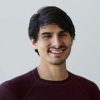
– Matthew Ramirez (Forbes 30 under 30 alumni and Founder of Rephrasely)
Here is another piece of advice from Nebojsa, a founder who also has experience working with development partners.
Communication is a key aspect of any successful partnership so before establishing any kind of cooperation, make sure that the business/person you are partnering with is able to communicate and respond to feedback constantly.
Create a detailed plan with clear goals and deadlines regarding product development and ensure that your partner agrees that it’s doable. Working in different time zones can cause many issues, but since we do quite a bit of business with freelancers, we worked out this problem through briefings using Loom, it’s a super convenient tool that enables async communication.
People worldwide have completely different working habits, so cultural differences may occur and you have to be open-minded to overcome them and work through them. During projects like these, technical difficulties will inevitably happen from time to time. When they do happen, people tend to blame one another because of frustration, which leads to more issues. I am probably repeating myself, but I cannot stress this enough, communication is the absolute star of any successful partnership.
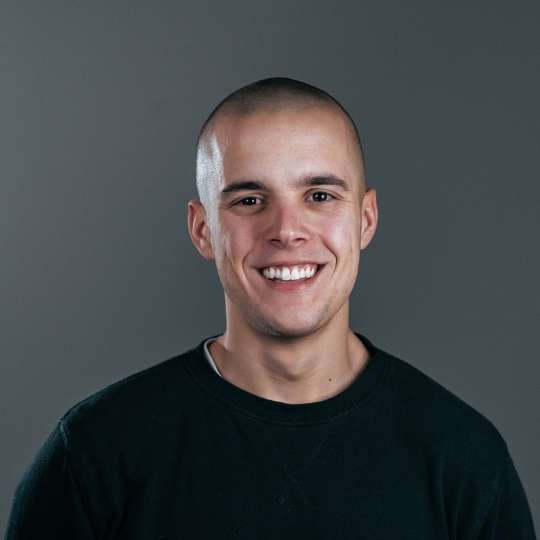
– Nebojsa Savicic (Co-founder of Plainly)
Develop Your Dream Tech Product with Technext
Technext is an outsourcing-focused software development company with 10+ years of experience in the industry. With a 50+ strong team, we offer a wide range of services and have the courage to take on projects of any size.
Technext is the right choice for you if you are a founder, CTO, project manager, or a guy with a dream project and
- Planning to augment a development team to take on a challenging project.
- Trying to replace your freelance developer by augmenting an expert developer from a managed office setup.
- Looking to replace your existing vendor with a more reliable and cost-effective tech partner?
- Looking forward to a long-term partnership with an offshore software development partner.
If you want to know more about us or just want some expert advice about your project, then we would be happy to schedule a free consultation with our managing director Sayed, who has 14+ years of experience in the industry.
I hope you now have a better understanding of outsourcing software development. Here is another article on in-house vs. outsourcing development. It will provide you with some additional insight.
If you have any questions, please give us a call or let us know in the comment section. We’d love to help answer your questions and grow your business.
Best of Luck!




